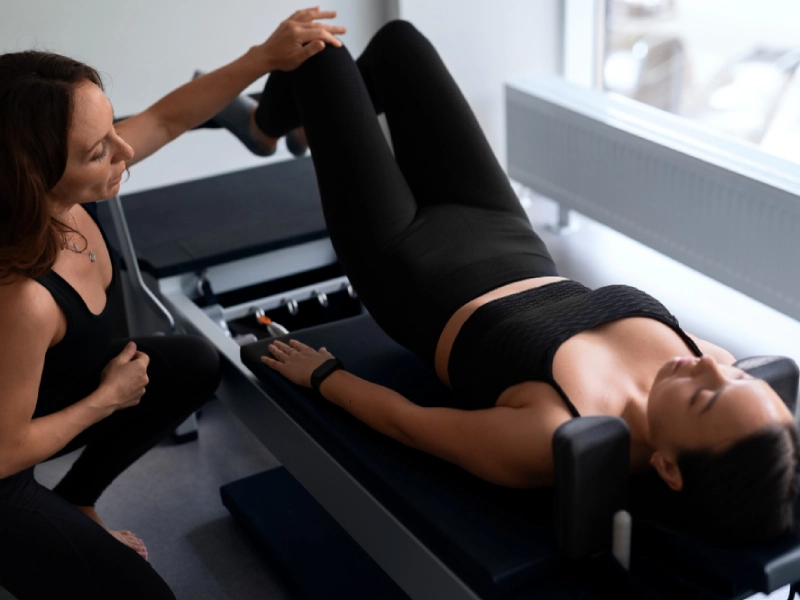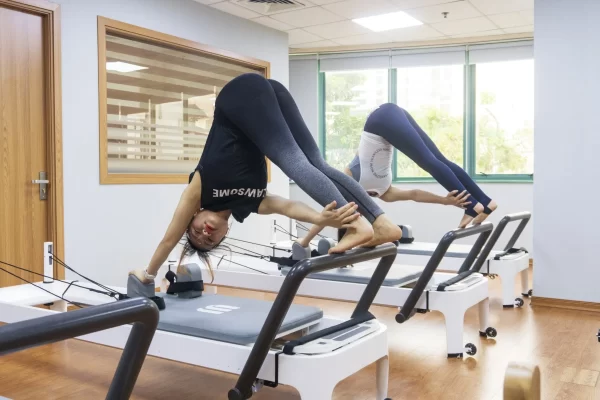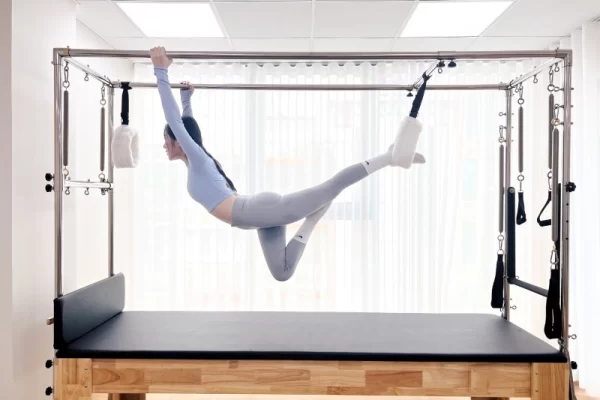Pilates practice correctly: Mistakes to avoid when practicing Pilates
18/11/2025Pilates is an excellent method for improving body awareness, strength, and flexibility. To achieve the best results and avoid injury, it is important to exercise correctly, just like with any other form of exercise. In this article, we will go over the mistakes to avoid when practicing Pilates and how to avoid them to ensure you have the best workout experience.
Why is practicing Pilates correctly so important?
Practicing Pilates correctly plays a crucial role in ensuring safety and optimizing the effectiveness of your workout. When performed with incorrect technique, the body can be placed in unsuitable positions, putting pressure on the spine, joints, and muscle groups, leading to muscle strain, back pain, and even serious injury.
In particular, Pilates exercises require the harmonious coordination of breathing, muscle control, and posture alignment. If these principles are ignored, you may inadvertently use the wrong muscle groups, reducing the effectiveness of your workout and losing the core benefits of this discipline.
On the other hand, when performed with proper technique, movements become precise, activating the correct target muscle groups, helping the body become more toned in a short period of time. This not only improves posture and strengthens the core, but also helps reduce back pain, regulate breathing, and increase natural body control. Therefore, adhering to proper technique when practicing Pilates not only helps you avoid injury, but also accelerates the process of achieving your desired physique and health.
Common mistakes to avoid when practicing Pilates
1. Improper breathing (holding your breath, shallow breathing, etc.)
The coordination of breathing and movement is one of the core principles of Pilates. During practice, many beginners make the mistake of holding their breath or taking shallow breaths, which can cause muscle tension and reduce the effectiveness of the workout.

Improper breathing is one of the mistakes to avoid when practicing Pilates.
Focus on deep diaphragmatic breathing to avoid this mistake. Exhale through your lips while contracting your abdominal muscles as you inhale through your nose, expanding your chest. In addition to improving your Pilates experience, proper breathing also supports your ability to maintain focus and mindfulness during practice.
2. Poor alignment
Poor alignment is one of the mistakes to watch out for when practicing Pilates. This mistake occurs frequently and can cause discomfort or even injury. When practicing at home, use a mirror or professional instructional videos to help you maintain proper alignment.
Be sure to pay attention to your instructor’s guidance on this. By maintaining proper alignment, you can be confident that you are using the right muscles and protecting vulnerable areas such as the neck and lower back. To keep your alignment accurate throughout the session, adjust your posture as needed.
3. Rushing through exercises
Controlled, precise movements are the foundation of all Pilates exercises. Rushing through them can increase the risk of injury while reducing their effectiveness.
Slow down and focus on the integrity of each movement to avoid this mistake. Maintaining your connection while focusing on using specific muscles is important. You will discover that a slow, deliberate approach yields superior results and gradually increases your strength and flexibility.
4. Using too much force
To perform Pilates movements, you cannot swing your arms and legs or rely on momentum. This is a common mistake that can strain your muscles and joints when you use too much force or momentum.
Instead, emphasize intentional movements and the use of your core. Exercises performed correctly will make you feel the target muscles working, which will help you progress faster.
5. Not following the exercise program
Simpler movements serve as the foundation for more complex movements in Pilates exercises, which are often built upon each other. Many people make the mistake of skipping progressions in an attempt to achieve more difficult exercises faster. However, this can lead to poor form and may cause injury.

Not following the exercise program can cause injury or poor training results.
Before moving on to more complex movements, it is important to follow the planned progression and grasp the basic principles. Your instructor will guide you through the appropriate levels and ensure that you are ready for the next level.
6. Neglecting regular practice
Pilates, like any exercise regimen, relies on consistency. Do not skip regular practice, as doing so may hinder your progress.
Try to regularly attend Pilates classes, whether in person or online. Set up and stick to a workout schedule if you’re exercising at home. Over time and with regular practice, the benefits of Pilates become increasingly clear.
7. Incorrect pelvic rotation
This mistake often occurs when beginners practice Pilates, leading to unwanted injuries.
Correct pelvic rotation is difficult to determine. First, check whether your pelvis is actually moving. Make sure your thighs are not rotating – this is not part of the pelvis.
You can feel the correct pelvic rotation by placing your hands on your hips-the top of your pelvis-then moving your hands down and inward, feeling and moving the muscles inside your body. This sensation is similar to fastening your seatbelt on an airplane. If you don’t feel it, you may be in the wrong position.
8. Overdoing it
Overtraining is one of the common mistakes to avoid when practicing Pilates. This mistake can lead to exhaustion, fatigue, and an increased risk of injury. Recovery exercises are very important for muscles to rest and recover after training. Skipping these exercises can cause muscle soreness and affect the effectiveness of subsequent training sessions.
9. Abdominal exercises are prone to injury
Many people believe that abdominal exercises in Pilates can easily lead to injury, but this notion is completely mistaken. In fact, practising abdominal exercises correctly in Pilates offers numerous health benefits, such as strengthening the abdominal muscles and improving the body’s flexibility.

The notion that abdominal exercises are prone to injury is a misconception.
As long as you focus on the exercise, listen to your body, and train under the guidance of a trainer, you will be able to master complex exercises and positions without fear of injury.
10. Pilates can be practiced anywhere
Many people mistakenly believe that Pilates can be practiced anywhere, as long as there is enough space to perform the movements. However, this is a mistake when practicing Pilates.
To ensure a safe and effective workout, choose a studio with a clean, well-ventilated environment and fully equipped with modern equipment. In particular, a team of reputable and experienced trainers is essential to ensure your workout is highly effective.
By understanding the mistakes to avoid when practicing Pilates, you will increase the effectiveness of your training and reduce the risk of injury. Remember to pay attention to your breathing, alignment, controlled movements and your progress. You can fully enjoy the many benefits that Pilates offers if you are determined and pay attention to every detail.






